In 2020, we all witnessed the biggest disruption ever. Everyone had to, and in fact is still learning to, navigate through these unexpected, unprecedented, and sometimes unbearable new realities in their private as well as professional lives. One striking difference from earlier business disruptions is that this crisis had people at the center and that HR was placed in the driver’s seat to enable organizations to steer through these really rough times. 2020 has clearly been the year of HR as a function.
It was the HR function that was entrusted with navigating everyone at the workplaces through uncertainties to a world full of flexibility and new expectations, however, the older HR practices and mindsets were rendered ineffective here. As we enter 2021 with the world looking at rebooting itself on the back of the new vaccine, work, workers and the workplaces are entering an era of super new normal. This super new normal is presenting some unheard-of challenges that are diagonally opposite to traditional HR thinking. Therefore, 2021 will be the year of not only an efficient and innovative HR but of super HR.
Super HR will have the following five superpowers:
- Technology: Technology will be one of the ‘signature’ superpowers of super HR as artificial intelligence, automation, and machine learning are no longer non-entities for HR. Remote working, which was the highlight of 2020, was possible only because of technology. Technology will continue to work as the conduit between employers and employees that are scattered across locations. AI will become an integral part of most new-age HR practices as algorithms will enable automation of repetitive tasks, freeing up more time for HR teams, who can instead focus their energies on strategic and high-impact tasks. What’s more, AI-powered HR tools will enable easier access to curated data and visualization, which will make insight-driven, strategic thinking a lot easier. Augmented analytics will automate insights using machine learning and natural language processing. This becomes a more self-service and user-friendly way to analyze employee data and generate actionable insights. We can say that going forward technology for super HR will play the same role as arc reactor played for the Iron Man.
- Empathy: Yes, I know it seems counterintuitive to put empathy just after technology, but the world has faced one of the biggest catastrophes in terms of human lives in the past one year. People have lost families, friends, jobs, and most importantly human connection. According to an Oracle and Workplace survey, 2020 has been the most stressful year ever for the workforce. HR leaders have to be empathetic towards each other and have to make concessions or ways to adjust according to specific needs. These adjustments can be special timings to incorporate child care, elderly care, or just some break time. So, empathy will be key for us to maintain and strengthen our connections with each other, be it with co-workers or employers. For a super HR, it will be the key to success in 2021 and beyond.
- Mental Wellness: Mental Wellness will be more important than ever. The stigma attached to mental health and seeking help to deal with mental issues have decreased significantly. HR leaders will have to be sensitive towards the topic and need to provide a safe and unbiased workplace for people to come forward with their issues. CEOs and CHROs need to understand that the mental wellbeing of the workforce is not just a big boost for their brand value, it is also a boost for their businesses.
- More emphasis on upskilling & reskilling: Gartner has placed reskilling and upskilling in the top five priorities for HR in 2021. HR needs to have a dynamic approach to reskilling and redeploying talent in which all impacted stakeholders work together to sense shifting skill needs and find ways to develop skills at the time of need. 2020 has taught us that we cannot rest on our existing skill sets and that we need to learn new skills constantly. The rate of obsolescence is frighteningly fast and we cannot afford to be caught napping. Super HR will have to keep the learning cycle in momentum to make sure that the existing workforce can be reskilled and upskilled in order to face the new market realities and challenges.
- Adhering to the Policy of ‘No Policy’: 2020 has demonstrated that modern-day organizations are capable of allowing supreme levels of flexibility to their employees and this is only possible by adapting to the new normal. To make this a successful model, HR needs to play the role of an adapter and innovator which can work towards a policy that is well-defined and modern. They should not leave any room for tentativeness or ambiguity as they drive their business through this transformation. In fact, they need to expand their repertoire and remain relevant for a seamless transition. New ways to measure productivity will emerge with this approach as HR adopts super normal modus operandi to be agilely compliant.
This list is only indicative and not all exhaustive. Keep in mind that the role of HR is evolving constantly and so will its ambition and responsibilities. All we know is that these superpowers can become redundant in the next quarter and we will see new ones coming to the rescue workplaces from the crisis-driven exigencies of the time. The bottom line is that all the organization functions and more so HR has to be fast enough to feel the pulse of the environment and be agile enough to adapt quickly. The inertia can become for HR what krypton was to Superman – a dangerous position to be in, or should we say a lethal weapon?
This blog post was written by Oracle are an exhibitor on the HRTech247 HCM Full Platform floor of the Technology Hall. You can visit their HRTech247 exhibition stand here.





